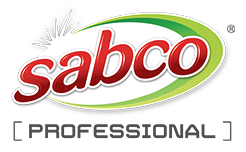
Microfibre is constructed from a blend of polyester and polyamide and is safe to use on the most delicate surfaces. The polyester serves as the scrubbing and cleaning fibre whilst the polyamide performs absorbs and makes it quick drying.
About Microfibre
Microfibre refers to fibres whose individual threads are finer than 1 dtex (short for “decitex“). 1 dtex means: 10,000 meter of this extremely fine individual threads weight just 1 gram. The microfibre is approx 50 times smaller than a human hair. Compared to other fabrics of the same weight, microfibre has a significantly higher volume and greater surface area, which results in better dirt removal than other fibres commonly used in mops and cloths. Although many surfaces may appear smooth, when looked at under a microscope they appear uneven. Microfibre reaches into these microscopic crevices where conventional fibres cannot and removes all dirt.
Electrostatic Effect
When microfibre is used dry on a floor or on a surface its friction results in an electrostatic charge that leads to the attraction of negatively-charged dirt. This happens without raising dust. Every type of dirt, dust, lint, hair and other soils are attracted and captured by the microfibre.
Capillary Effect
When used damp the extremely fine fibres create a capillary effect within the fibre, sucking up and holding liquid/dirt from the surface into the inner fibres of the cloth. This “capillary effect” allows the microfibres to absorb and hold up to six times its weight in liquid, thanks to the higher number of air chambers and the smallest pores between the fibres. Dirt and bacteria are trapped/held in the fibres until the cloth/mop is laundered.
